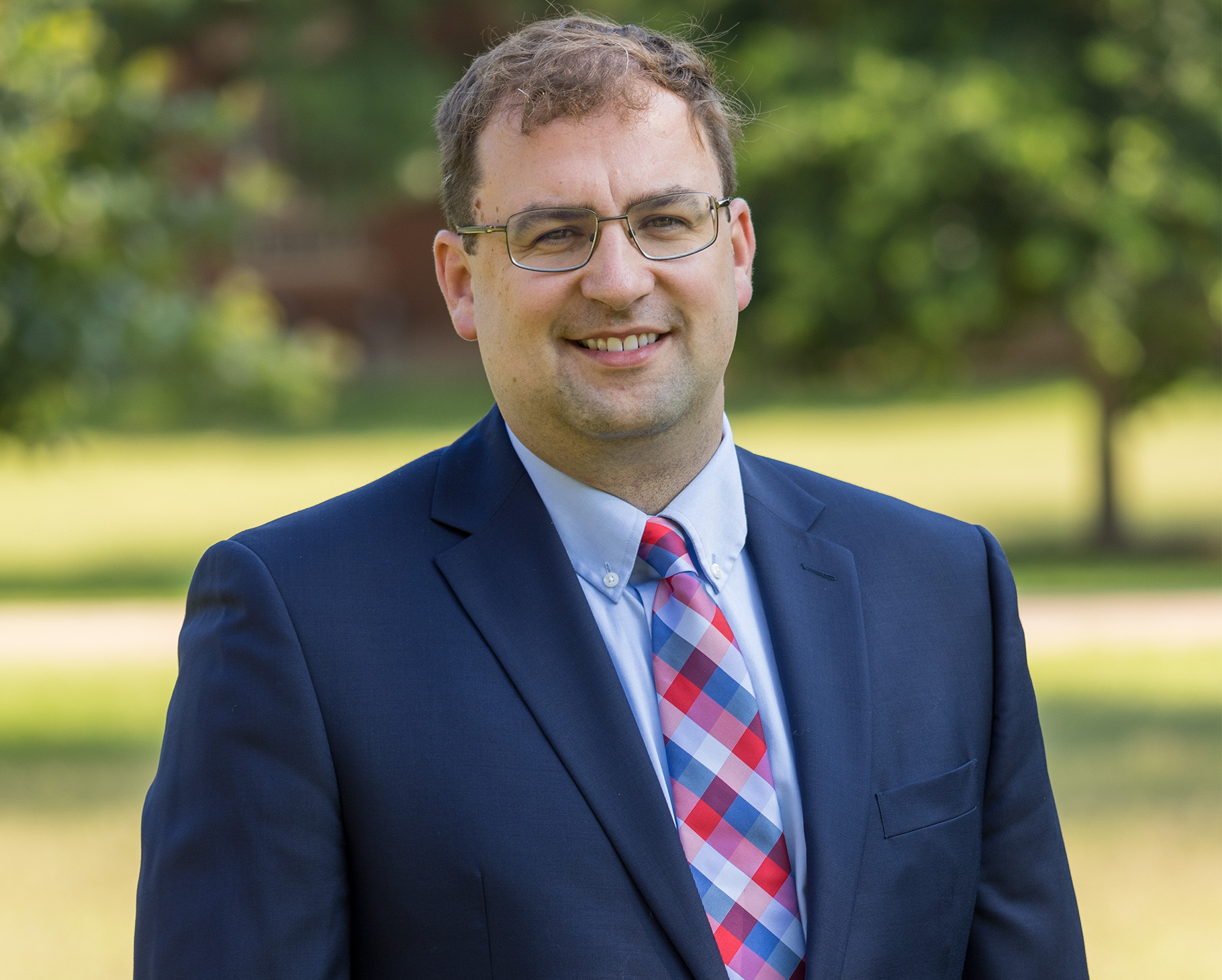Brian Elbing
Brian Elbing is the Tom Cunningham Chair and Professor in the School of Mechanical and Aerospace Engineering at Oklahoma State University (OSU). He is an expert in fluid mechanisms with a wide range of applications including sounds from tornadoes, drag reduction for ships, helicopter wake dynamics, and atmospheric turbulence. For his tornado research, he was one of the inaugural recipients of the Experimental Physics Investigator award funded by the Gordon and Betty Moore Foundation.
His research has been published in journals and featured in numerous articles (e.g. Wall Street Journal, Physics Today), radio shows (e.g. NPR’s All Things Considered), and on the National Geographic Channel.
Education
Ph.D., Mechanical Engineering
University of Michigan, 2009
M.S.E., Mechanical Engineering
University of Michigan, 2005
B.S., Mechanical Engineering
Western Michigan University, 2003
Research Interests
- Flow induced noise, including tornado infrasound
- Flow control with an emphasis on drag reduction applications
- Atmospheric turbulence and monitoring
- Multiphase flows
Awards and Recognition
- Tom J. Cunningham Chair, Oklahoma State University (2024-present)
- Experimental Physics Investigator, Gordon and Betty Moore Foundation (2022-present)
- Regents Distinguished Research Award, Oklahoma State University (2024)
- President Research Fellow, Oklahoma State University (2022)
- Balloon-based Acoustic Seismology Study Team Award, NASA Jet Propulsion Lab, (2021)
- Excellent Senior Faculty Award, Oklahoma State University, CEAT (2025)
- Distinguished Early Career Faculty Award, Oklahoma State University (2019)
- Excellent New Teacher Award, Oklahoma State University, CEAT (2016)
Professional Memberships
- American Physical Society (APS) –Division of Fluid Dynamics (DFD); member
- American Institute of Aeronautics and Astronautics (AIAA); member
- American Society of Mechanical Engineers (ASME); member
- Acoustical Society of America (ASA); member
- Oklahoma AIAA/ASME Symposium
Courses Taught
- MAE 3333 Fundamental Fluid Dynamics
- MAE 4273 Experimental Fluid Dynamics
- MAE 5233 Advanced Fluid Dynamics I
- MAE 5273 Advanced Fluid Dynamics II
Selected Publications on Tornado Sounds
- TC Wilson, CE Petrin & BR Elbing (2023) “Infrasound and low-audible acoustic detections from a long-term microphone array deployment in Oklahoma,” Remote Sensing, 15(5), 1455-23 (doi.org/10.3390/rs15051455).
- BR Elbing, CE Petrin & MS Van Den Broeke (2019) “Measurement and characterization of infrasound from a tornado producing storm,” Journal of the Acoustical Society of America, 146(3), 1528-1540 (doi.org/10.1121/1.5124486).
- BC White, BR Elbing & I Faruque (2022) “Infrasound measurement system for real-time in-situ tornado measurements,” Atmospheric Measurement Techniques, 15(9), 2923-2938 (doi.org/10.5194/amt-15-2923-2022).
- G Terry, RJ KC, D Fox, A Alexander, R Maryami & BR Elbing (2024) “Preliminary evidence of sound amplification of turbulent noise due to latent heat,” Proceedings of Meetings on Acoustics, 54(1), 045005 (doi.org/10.1121/2.0002022).
- BR Elbing, TC Wilson, CE Petrin, RJ KC, T Swaim and B Lindsey (2023) “Observations and potential mechanisms for tornado infrasound,” Proceedings of Meetings on Acoustics, 51(1), 022001 (doi.org/10.1121/2.0001784).
Selected Publications on Drag Reduction
- BR Elbing, ES Winkel, KA Lay, SL Ceccio, DR Dowling & M Perlin (2008) “Bubble-induced skin-friction drag reduction and the abrupt transition to air-layer drag reduction,” Journal of Fluid Mechanics, 612, 201-236 (doi.org/10.1017/S0022112008003029).
- BR Elbing, S Mäkiharju, A Wiggins, M Perlin, DR Dowling & SL Ceccio (2013) “On the scaling of air layer drag reduction,” Journal of Fluid Mechanics, 717, 484-513 (doi.org/10.1017/jfm.2012.588).
- BR Elbing, MJ Solomon, M Perlin, DR Dowling & SL Ceccio (2011) “Flow-induced degradation of drag-reducing polymer solutions within a high-Reynolds number turbulent boundary layer,” Journal of Fluid Mechanics, 670, 337-364 (doi.org/10.1017/S0022112010005331).
- Z Saeed, Y Farsiani & BR Elbing (2024) “Experimental observations on Weissenberg number-controlled developing turbulent boundary layers,” Physical Review Fluids, 9(10), 104606 (doi.org/10.1103/PhysRevFluids.9.104606).
- BR Elbing, M Perlin, DR Dowling & SL Ceccio (2013) “Modification of the mean near-wall velocity profile of a high-Reynolds number turbulent boundary layer with the injection of drag-reducing polymer solutions,” Physics of Fluids, 25(8), 085103 (doi.org/10.1063/1.4817073).
Selected Publications on Atmospheric Monitoring
- TC Wilson, EA Silber, TA Colston, TR Edwards, BR Elbing (2025) “Bolide infrasound signal morphology and yield estimates: A case study of two events detected by a dense sensor network,” The Astronomical Journal, 169(4), 223 (doi.org/10.3847/1538-3881/adbb70).
- EA Silber, DC Bowman, CG Carr, DP Eisenberg, BR Elbing, D Fox, E Hough, JD Jacob, RJ KC, K Spillman, TC Wilson, Z Yap, et al. (2024) “Geophysical observations of the 24 September 2023 OSIRIS-REx sample return capsule re-entry,” Planetary Science Journal, 5(9), 213 (doi.org/10.3847/PSJ/ad5b5e).
- TD Swaim, E Hough, Z Yap, JD Jacob, S Krishnamoorthy, DC Bowman, L Martire, A Komjathy & BR Elbing (2024) “Performance characterization of heliotrope solar hot-air balloons during multihour stratospheric flights,” Journal of Atmospheric and Oceanic Technology, 41(4), 357-373 (doi.org/10.1175/JTECH-D-23-0091.1).
- B Hemingway, AE Frazier, BR Elbing & JD Jacob (2020) “High-resolution estimation and spatial interpolation of temperature structure in the atmospheric boundary layer using a small unmanned aircraft system,” Boundary-Layer Meteorology, 175, 397-416 (doi.org/10.1007/s10546-020-00512-1).
- RJ KC, TC Wilson, D Fox, KB Spillman, MA Garcés & BR Elbing (2025) “Infrasound observations of the OSIRIS-REx sample return capsule re-entry from Wendover Airport,” Seismological Research Letters, 1-14 (doi.org/10.1785/0220250019).


